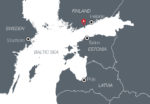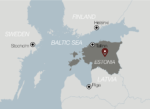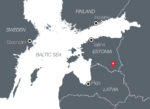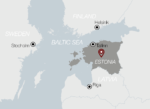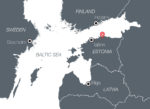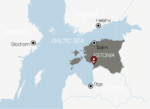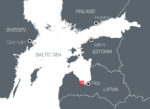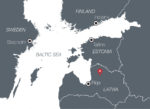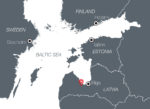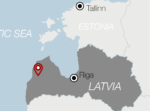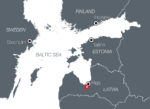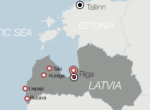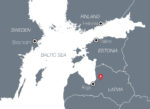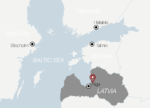RURAL
PROGRAMMES
These programmes offer brief rural experiences that can bring some diversity to the existing tour operator itineraries for group and individual travel. There is a choice of short, stopover packages and half or full day programmes. Short programmes can be adapted to the timings and geographical area covered by tour operators’ existing tours and fitted in as additional elements without changing the basic tour itinerary. Half and full day programmes, with or without overnight stays in country hotels, can be useful for individual tourists interested in experiences outside cities. Each programme package consists of several services.
The descriptions of the programme packages are provided to give the best idea of the product. They are structured in three parts:
– General Information presents the technical details regarding the programme’s duration, distances, etc. to help readers understand whether and how the programme could be fitted into tour operators’ itineraries;
– The Introduction describes the highlights and unique experiences the programme offers;
– The Programme Itinerary describes, step by step, all the activities included in the package.
DESTINATION ÅLAND
Visitaland.com
https://aland.travel/islands
www.alandstrafiken.ax/en
Discover 6700 islands!
Åland is an autonomous region of Finland. It is the smallest region of the country, constituting 0.51% of its land area and 0.54% of its population. The official language is Swedish. The capital city of Åland is Mariehamn.
Åland has 6,700 named islands and additionally 20,000 smaller islands and islets. It is a small community of some 32.000 inhabitants and has a lot of nature trails, beaches, forests and the four seasons to discover. The islands are connected by ferry lines, bridges, and causeways.
DESTINATION ARCHIPELAGO OF KÖKAR IN ÅLAND
In the outermost southern part of Åland lies the archipelago of Kökar, consisting of one larger island surrounded by thousands of smaller ones. What most attracts visitors to Kökar today is the stunning nature, composed of barren rocks with pockets of lush forests, wild fields and protected bays for swimming. At Kökar guests can visit the local history museum (hembygd museum), take a boat trip to Källskär, bike around and take a picnic in Hamnö near the church. Kökar is also known for the Franciscus monastery that stood here during the medieval times and “Franciscan days” are held every July to celebrate the Saint. Peders Aplagård is also an excellent place to visit by bike, where they bottle spring water “oppsjöbrus” and sell apple products. Visitors can also take a guided tour in their apple tree garden.
Stay at Hotel Brudhäll, Skinnars cottages or Antons B&B where they have sheep that guests can see and pet. Visitors are welcome at Kökar to experience a long walk along the nature trails, watch birds from bird-watching platforms and take a picnic in the sunset.
How to get there:
From Finland Pargas (2.5h), or Långnäs mainland Åland (2.5h).
DESTINATION BRÄNDÖ ISLAND IN ÅLAND
Brändö is the northernmost of the Åland archipelago municipalities and closest to the mainland of Finland. Brändö consists of over one thousand islands, ten of them are inhabited, among them Lappo and Jurmo. The islands are connected to each other by bridges, causeways and small ferries. There are many islets and skerries, small archipelago villages, sights and other places which can be explored by e.g., kayaking amidst the islands or cycling along the roads.. The varied landscape offers everything from deciduous forests to barren cliffs and the ever-present sea. There are great public bathing beaches, e.g. Korsklobbsrevet south of Brändöby village has a diving board and a beach volleyball court.
How to get there:
Brändö is situated 2.5 hours from mainland Åland, 2 hours from Turku, Finland. If travelling from the Turku archipelago it is easy to catch the ferry from Houtskär in Pargas to Torsholma in Brändö, or from Osnäs to Åva.
DESTINATION LAPPO ISLAND IN ÅLAND
Lappo island is situated between Torsholm and Kumlinge. Lappo covers an area of 8 km2, measuring 4.3 km from north to south. The island has around 30 permanent inhabitants and many more in the summer. Lappo has a store with a post office, library, guest harbour, museum, summer restaurant, pension, frisbeegolf course and hiking trail.
How to get there:
There is a ferry connection from the Finnish harbour of Osnäs or the ferry from Hummelvik. From the village harbour Finvik there is a connection with M/S Frida II to neighbouring island Asterholma and Asterholma holiday village.
DESTINATION – JURMO ISLAND IN ÅLAND
The small island of Jurmo in Åland’s north-eastern archipelago is a place for any visitor who wants to take it easy. The length of the island is about 3.5 km and it boasts a marina, hostel, shop, café and restaurant. This is a rural destination where the visitors can relax and enjoy the maritime lifestyle.
How to get there:
Jurmo in Brändö municipality is only a short step from the mainland. From Osnäs in Gustavs on the mainland, it is just over half an hour’s journey by car ferry Viggen to Åva. From Åva, the small ferry Doppingen often travels to Jurmo and it takes only ten minutes. From Mariehamn, the journey to Jurmo is about four hours and the easiest way is by car and archipelago ferry from Hummelvik on Vårdö.
DESTINATION LOHJA
Lohja – a cosy lake town in South Coast Finland
Lohja is a beautiful region in the midst of unspoiled, true Finnish nature, only a one-hour drive west from Helsinki. Enjoy the peacefulness of Lake Lohjanjärvi, the largest lake in Southern Finland. Be amazed by the same landscape, lakes, and forests that inspired the creator of the Finnish national epic, The Kalevala. Explore the myths and mythology of the Kalevala and learn healing methods from the old Finnish way of life.
Lohja is a traditional region with well-established roots. At the heart of the cosy town is the 500-year old church site where people gathered and traded long before the church was built. Later fine manors and industrial plants were erected, helping Lohja grow even bigger and more prosperous. Municipal mergers have enriched the Lohja area with new and charming villages, fertile countryside, and beautiful cultural landscapes. The area’s unique specialty are apples and the many sweet delicacies made from them. In Lohja region there are more than 200 000 apple trees which ripen during August–September and, of course, charming hanami – flowers in May.
What is the enchantment of the lake and forests? It is a moment spent with loved ones in the peace of your own cottage, hiking in the lush groves of the shores of Lake Lohjanjärvi or skating on the ice of a frozen lake in winter. The enchantment of the lake is relaxing by the water, sunny summer events and local delicacies on the terrace of the summer café.
SWEDEN
DESTINATION SÖDERHAMN
Söderhamn – an active archipelago municipality
Söderhamn is an archipelago municipality with both a long and proud history. The city of Söderhamn located, just 2 hours north of the capital Stockholm, is in an excellent location where the forests of Hälsingland and the blue mountains meet.
Söderhamn is characterized by the beautiful archipelago with its many idyllic islands, bays and islets. It offers opportunities for swimming, boating and fishing. Söderhamn’s vicinity close to the countryside is a striking feature of the entire municipality with its huge expanses of untouched forest and magnificent natural scenery. The town’s many parks which are a riot of colour during the summer are well known and a tour of these beautiful parks is a real experience. Söderhamn which was already an important market place during the early mediaeval period is situated at the far end of Söderhamnsfjärden (the Söderhamn inlet). At the beginning of the 17th century a rifle factory was built in Söderhamn. This supplied the Swedish military with weapons and as a result Söderhamn was granted a town charter. Söderhamn is geographically centrally located in Sweden and is near to everything. The municipality measures 60 km from north to south and stretches 30 km inland from the beautiful coast.
ESTONIA
DESTINATION SETOMAA HISTORIC REGION
Setomaa – authentic traditions in everyday life
Setomaa is one of the as yet undiscovered regions of Estonia. Located on the borders of Estonia and Russia the culture of the Setos, the people living in Setomaa, has been influenced by both cultures, yet they have maintained their own traditions and values. The Setos are especially well known for their traditional way of singing (Seto leelo), which is on the UNESCO list of Intangible Cultural Heritage. In addition to their own singing traditions, the Setos have their own language, remarkable and colourful national clothes and impressive silver jewellery, as well as cuisine. Being part of the Orthodox church makes their mindset different from that of Estonians.
DESTINATION VANA –VÕROMAA HISTORIC REGION
Amazingly diverse and untouched primeval nature, hiking trails, numerous farms, fairs, saunas, Võru language – these are the keywords characterising destination Vana-Võromaa.
The southernmost area of Estonia will surprise you with its natural statistics. One of the hilliest regions of the country – Haanja Uplands, the highest peak in Estonia – Suur Munamägi (318 m above sea level) and the deepest lake in Estonia – Rõuge Suurjärv (38 m) can all be found here. The Võhandu, Estonia’s longest river, and the Piusa, the river with the greatest overall descent, both meander through here. Scenic sandstone outcrops fringe the banks of the River Piusa, of which the Härma Mäemine wall is the highest in Estonia.
The local community are especially proud of their smoke sauna tradition which is included in the Representative List of the Intangible Cultural Heritage of Humanity (UNESCO). A smoke sauna is a great way to experience ancient traditions. There is a rich and unique custom associated with taking a sauna, which in addition to the customs of going to the sauna also includes a knowledge about sauna treatment and meat smoking and the skills of heating the sauna, making the body and facial care products that can be used in the sauna as well as building the sauna.
In the middle of the hills and lakes of Võromaa, there is plenty to discover all year-round.
DESTINATION MULGIMAA HISTORIC REGION
Mulgimaa – a community with entrepreneurial spirit
Mulgimaa is a historic region in southern Estonia. Mulgi farmers were known to be wealthy and the first in Estonia to start buying their own farms from landlords in the late 19th century to cultivate flax. Their growth in wealth was demonstrated by the building of stately houses, as well as being able to send their children to study at the best and most expensive schools. Today Mulgimaa fascinates the senses with its unique nature and heritage from the past, as well as with exciting ventures and active people.
Three Mulgi cultural icons: the dialect, the well-known men’s long black jacket and the traditional Mulgi porridge have survived to this day.
DESTINATION ONION ROUTE – THE SHORES OF LAKE PEIPSI
Onion route – traditional onion growing villages along the coast of Lake Peipsi
The Onion Route (Sibulatee in Estonian) is a destination on the shores of Lake Peipsi, the largest lake in Estonia and a trans-border lake of the European Union. It is well known for its cultural diversity. Estonian and Russian communities with their different cultures live side by side here and these include Estonian traditional farming culture, Baltic-German manor culture and Russian Old Believers (orthodox Christian) culture. Russian Old Believers grew and continue to grow the Peipsi Onion. The Onion Route got its name from the local tradition of onion growing.
DESTINATION SOOMAA
Soomaa – wetland area with ancient traditions
Soomaa is a landscape region in South-West of Estonia. In Estonian, the word ‘soomaa’ literally means ‘land of mires’ while the area is best known for having five unique seasons with the fifth season being the flooding season, when the water from melted snow or heavy rains inundates all the lower forests, roads and even yards.
The history of human activity in Soomaa dates back to the Stone Age. The ancient and charming nature of this place is reflected in the tradition of making expanded dugout boats (Estonian haabjas), a technique which is still being taught in Soomaa. Soomaa is probably the only place in Europe where the tradition of making such boats survived into the 21st centuries and in recent decades, a surge of interest in making dugouts has revitalized the ancient tradition.
Soomaa visitors can also take part in canoe trips, snowshoe hikes and animal viewing tours where beavers are the most popular focus, a key stopping point is the mysterious Tori Hell.
Throughout Estonia sauna bathing is a part of the people’s identity and it is sacrosanct for them and so it is in Soomaa. Sauna has always been an important ritual with many functions, it is at the same time a very practical and a spiritual environment and provides good relaxation for example when returning from a trip outdoors. So, after the long traditional sauna session, the mind-set of local people will become understandable.
In 1993 in the core area of Soomaa landscape region was designated Soomaa National Park, which incorporates an extensive wilderness area, containing large peatbogs and thick forests interwoven by numerous rivers and the floodplains that border them.
DESTINATION LAHEMAA NATIONAL PARK
https://www.visitestonia.com/en/where-to-go/north-estonia/lahemaa-national-park
Deep peace and quiet of the oldest national park of Estonia Lahemaa national park was formed to protect and present both the nature and the cultural heritage typical of the northern coast of Estonia.
Lahemaa is the oldest national park of Estonia with over 70 villages and more than 3000 inhabitants. Characteristic features of the park are its four lovely peninsulas, outstanding manors, unspoiled nature and active community. It is known for its four excellent examples of manor culture. Three manor complexes have been well renovated with a network of parkland walks amid the old trees and host regular event programmes.
The seaboard has the most erratic boulders and fields of stones in Europe and since the soil is stony and infertile, communities had to rely on the sea for their living with fishing, timber transport, shipbuilding and sea trade.
Moving around was easier by sea than on land, the connections between the coastal villages of Estonia and Finland were very close and the local dialect spoken by peninsula inhabitants was like Finnish. Village development was strongly influenced by the Baltic Klint, a limestone escarpment. Ancient settlements, old villages and manors are situated on the edge of the Klint and surrounded by alvars with junipers.
Inland communities were largely agricultural with some small industries, watermills and a cardboard factory. The community was more stable than that by the sea and nowadays most people live in the villages the whole year round, even if they work in nearby towns.
LATVIA
DESTINATION ABAVA RIVER VALLEY
The Ancient Abava River Valley – vineyards and small towns
The Ancient Abava River Valley is up to 2 km wide and 30–40 meters deep. Melting glacier waters created it, and the location is full of gorgeous landscapes. The Abava River winds its way through forests and past ancient towns and rural villages delighting visitors with natural flower meadows that are particularly beautiful during the summer, refreshing small waterfalls, secretive caves and several castle hills. Livestock adapted to life in the wild can be found here too.
The valley is host to the only vineyards in Latvia and in the town of Sabile which nestles deep in the river valley, ciders and wines produced nearby can be sampled and purchased. A little upriver the small town of Kandava has a stone bridge river crossing as its symbol while further still, in Pūre, there is a chocolate factory offering tours and tastings.
DESTINATION SĒLIJA
Undiscovered islands of Sēlija
Sēlija is one of Latvia’s historical regions. Located on the left bank of the River Daugava, it borders Lithuania and Belarus.
Characteristic features of the region are scenic small farmsteads, churches of various confessions, hills and wetlands, small towns and villages, local dialect and traditional foods such as potato dumplings stuffed with meat, cottage cheese pancakes and beaver gland infusion – a renowned natural medicine. There are strong traditions of social life in Sēlija region, neighbours, families and friends all come together on important occasions and events such as open air dancing parties, beer tasting as part of the brewing process, “pig funeral” – slaughtering of a farm pig where neighbours are invited to feast on meat and sauerkraut. In Sēlija, historic tradition lives along well with modernity.
In earlier times, people lived in settlements surrounded by forests, marshes and meadows. These settlements were called islands and each had a name, for example, Island of Birds, Island of Swans. Each island had its own laws and traditions. In Dviete parish, during the spring flood which is called the 5th season of a year, islands can be distinguished as elevated land plots with farmsteads on them. Today, one can visit 17 islands and experience the special identity of the Sēlija region.
DESTINATION NORTH VIDZEME
Northern Vidzeme – a balance between urban and natural environments
The northern part of the cultural and historical region of Vidzeme borders Estonia. Northern Vidzeme towns have a unique charm and a Latvian mentality. The city of Valmiera boasts the Vidzeme University College, and is a town focused on development, as well as a place for knowledge, talents and regional entrepreneurship. The town of Smiltene has a peaceful environment with low residential buildings and a unique terrain with hillocks, valleys, forests, parks and several lakes. Limbaži is one of the oldest towns in Latvia. Wall paintings in the old city hall and the Live Silver Museum are just a few of the places to visit in Limbaži. The Northern Vidzeme Biosphere Reserve has been declared a protected environmental territory of international importance by the UNESCO Man and Biosphere programme. The reserve is Latvia’s largest specially protected environmental territory, and it covers approximately 6% of Latvia’s territory.
DESTINATION GAUJA NATIONAL PARK
Gauja National Park is the largest and oldest of the national parks in Latvia. It protects the rich nature of the ancient Gauja River valley and its surrounding areas as well as the vast diversity of plant, bird and insect species found here.
The origins of the ancient Gauja River valley go back more than 350 million years, but its current ravine-ridden terrain was moulded by the glacier meltwater at the end of the Ice Age. The Gauja, which is the longest river in Latvia (452 km), winds through the national park. The river once served as a trading route, and the Livonians built their settlements on its banks. Strong stone castles, which were enclosed by steep slopes and deep valleys, were built in the 13th century. The cities and the social and cultural life grew around these castles.
Today, the park is a place where legends of the past live alongside modern and cosy guest houses, country houses, farms, restaurants and leisure spots. Here you can enjoy the aura of antiquity in old castles, receive a burst of energy at one of the ancient sacred places or experience the healing properties of the springs. You can also touch trees planted by kings, hear your voice echoing off sandstone rocks, or let the nature trails carry you off into rich forests. All of this should be enjoyed slowly, letting the taste, smell and colours introduce you to the rhythm of local life. This is best done by hiking, riding a bicycle or a horse, or even taking a boat down the gentle stream of the Gauja River.
Visitors can enjoy Gauja National Park by:
- Walking along the nature trails (more than 30 in the park)
- Experiencing real Latvian countryside living and food, by participating in workshops or helping the farmers
- Getting to know Latvian craftsmanship and making one’s own Latvian souvenirs
- Tasting local beers, herb teas, sweets, bread and wines
- Enjoying picturesque boat trips along the Gauja river – seeing sandstone cliffs and rocks
- Feeling the breath of ancient castles and manors
- Experiencing active holidays by cycling, bow shooting, skiing, running or walking with huskies, horseback riding
- Fishing, mushroom picking, berry picking, herb tea picking.




